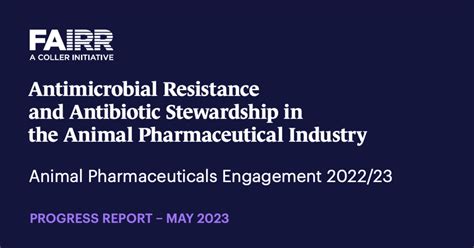In recent years, biotechnology has revolutionized various fields, and veterinary medicine is no exception. Advancements in biotechnology are driving significant improvements in pet healthcare, from innovative diagnostic tools to groundbreaking treatment options. This article explores the transformative impact of biotechnology on veterinary medicine, highlighting cutting-edge developments that are enhancing the health and wellbeing of pets worldwide. We will delve into the latest diagnostic tools, treatment innovations, and preventive measures that are shaping the future of pet care. Through case studies and success stories, we will also address the challenges faced and future trends in this rapidly evolving field
Let’s explore this topic in detail with dominure.com
1. Overview of Biotechnology in Veterinary Medicine
Biotechnology in veterinary medicine represents a transformative leap in how we approach pet healthcare. It encompasses a range of advanced technologies that integrate biological systems with technological innovations to improve diagnosis, treatment, and prevention of diseases in animals. One of the key advancements is the development of sophisticated diagnostic tools, such as genetic testing and advanced imaging techniques, which enable early and accurate detection of diseases. Additionally, biotechnology has introduced novel treatment methods, including gene therapy and regenerative medicine, which offer new hope for managing previously untreatable conditions.
Preventive measures have also seen significant improvements, with biotechnological advancements leading to more effective vaccines and targeted therapies. These innovations not only enhance the overall health and longevity of pets but also contribute to more personalized and precise care. As biotechnology continues to evolve, it promises to bring even more groundbreaking solutions to the forefront of veterinary medicine. By harnessing the power of biological systems and cutting-edge technology, biotechnology is poised to redefine the landscape of pet healthcare, offering new possibilities for improving the quality of life for pets around

2. Diagnostic Tools
Diagnostic tools in biotechnology are revolutionizing veterinary medicine by providing unprecedented accuracy and efficiency in detecting and diagnosing diseases in pets. Advanced technologies such as genetic testing allow for the identification of hereditary conditions and predispositions, enabling early intervention and personalized treatment plans. High-resolution imaging techniques, including MRI and CT scans, offer detailed views of internal structures, facilitating precise diagnoses of complex conditions.
Additionally, biosensors and molecular diagnostics have enhanced the ability to detect pathogens and biomarkers with high sensitivity and specificity. These tools enable veterinarians to diagnose diseases at a molecular level, improving the accuracy of results and leading to more effective treatments. The integration of artificial intelligence and machine learning in diagnostic tools further augments their capabilities, allowing for faster analysis and interpretation of data. Overall, these advancements are significantly improving the speed and accuracy of diagnoses, ultimately leading to better outcomes and enhanced care for pets.

3. Treatment Innovations
Treatment innovations driven by biotechnology are reshaping how we manage and cure diseases in pets. One notable advancement is gene therapy, which aims to correct genetic defects by introducing or altering genetic material within a pet’s cells. This approach offers potential cures for genetic disorders that were previously untreatable. Additionally, regenerative medicine, including stem cell therapy, is providing new treatment options for conditions such as arthritis and spinal injuries. By utilizing the body’s own cells to repair and regenerate damaged tissues, these therapies are enhancing recovery and improving quality of life.
Biotechnology has also led to the development of targeted therapies, which are designed to address specific molecular pathways involved in diseases. These treatments are more precise than traditional methods, reducing side effects and improving efficacy. Moreover, advancements in drug delivery systems, such as nanoparticle-based carriers, are enabling more effective and controlled delivery of medications. These innovations not only advance the treatment landscape but also contribute to more personalized and effective care for pets. As biotechnology continues to evolve, its role in veterinary medicine will undoubtedly expand, offering even more groundbreaking treatment options for a wide range of conditions.

4. Preventive Measures
Preventive measures in biotechnology are significantly enhancing pet healthcare by focusing on early intervention and disease prevention. Advances in biotechnology have led to the development of highly effective vaccines that protect pets from a range of infectious diseases. These vaccines are designed with precision, targeting specific pathogens and improving overall immunity.
Additionally, biotechnology has introduced innovative diagnostic tools that enable veterinarians to perform routine screenings and detect potential health issues before they become serious problems. Genetic testing, for instance, allows for the identification of breed-specific health risks, enabling proactive management and personalized care plans.
Biotechnology also supports the creation of dietary supplements and nutraceuticals tailored to individual pets’ needs, helping to maintain optimal health and prevent diseases. The integration of these advanced preventive measures ensures that pets receive more comprehensive and individualized care, ultimately contributing to their long-term wellb

5. Case Studies and Success Stories
Case studies and success stories highlight the transformative impact of biotechnology on veterinary medicine. One notable example is the use of gene therapy to treat inherited retinal diseases in dogs. Affected animals, previously facing blindness, underwent gene therapy that successfully restored their vision, demonstrating the potential of biotechnology to correct genetic defects.
Another success story involves stem cell therapy for treating canine arthritis. By using stem cells derived from the pet’s own body, veterinarians have achieved significant improvements in mobility and pain reduction, offering a new lease on life for affected pets.
In preventive care, a case study focused on a breed predisposed to heart disease showcases the benefits of genetic screening. Early detection allowed for proactive management and tailored treatment, significantly improving the pet’s quality of life and extending their lifespan.
These examples underscore the profound advancements biotechnology brings to veterinary medicine, illustrating its role in not only treating existing conditions but also in preventing and managing health issues. As more success stories emerge, they highlight the growing potential of biotechnology to enhance pet healthcare and improve outcomes for animals worldwide.

6. Challenges and Limitations
Despite the remarkable advancements biotechnology has brought to veterinary medicine, several challenges and limitations remain. One significant challenge is the high cost associated with cutting-edge biotechnological treatments and diagnostic tools. The development and implementation of advanced therapies, such as gene and stem cell therapies, often involve substantial expenses, which can limit accessibility for many pet owners and veterinary practices.
Additionally, there are concerns about the long-term safety and efficacy of some biotechnological interventions. As these technologies are relatively new, their long-term effects on pets are not yet fully understood, raising questions about potential risks and unforeseen consequences.
Regulatory hurdles also pose a challenge. The approval process for biotechnological products can be lengthy and complex, which can delay the availability of new treatments and diagnostic tools. Furthermore, the rapid pace of technological advancement often outstrips existing regulatory frameworks, creating uncertainty in how new innovations will be regulated and integrated into standard veterinary practice.
Ethical considerations also come into play, particularly concerning genetic modifications and the use of animal-derived materials in treatments. Balancing innovation with ethical standards is crucial to ensure that advancements in biotechnology are both responsible and beneficial.
Addressing these challenges is essential to maximize the potential of biotechnology in veterinary medicine while ensuring it remains accessible, safe, and ethically sound.

7. Future Trends and Developments
The future of biotechnology in veterinary medicine promises exciting developments and innovations. One major trend is the continued advancement of personalized medicine, where treatments and preventive measures are tailored to the individual genetic profile of pets. This approach aims to enhance efficacy and minimize adverse effects.
Additionally, the integration of artificial intelligence and machine learning is set to revolutionize diagnostics and treatment planning, offering more precise and faster analysis of data. Advances in nanotechnology could further improve drug delivery systems, allowing for targeted therapies with greater accuracy.
The expansion of regenerative medicine, including tissue engineering and advanced stem cell therapies, holds promise for treating complex conditions and injuries more effectively. As research progresses, we can expect new biotechnological solutions to emerge, offering innovative ways to manage and prevent diseases. These trends will continue to drive improvements in pet healthcare, enhancing the quality of life for animals worldwide.

8. Conclusion
Biotechnology is rapidly transforming veterinary medicine, bringing innovative solutions that enhance the diagnosis, treatment, and prevention of diseases in pets. From advanced diagnostic tools and groundbreaking treatment options to effective preventive measures, the integration of biotechnology is significantly improving the quality of pet healthcare. Case studies and success stories demonstrate the tangible benefits of these advancements, offering hope and improved outcomes for pets with various health conditions.
However, challenges such as high costs, regulatory hurdles, and ethical considerations need to be addressed to ensure that these innovations are accessible, safe, and responsible. Looking ahead, future trends in biotechnology, including personalized medicine, artificial intelligence, and regenerative therapies, promise to further revolutionize the field.
Biotechnology’s ongoing evolution promises more effective and personalized care for pets worldwide, improving their health and well-being. Harnessing these advancements while addressing the associated challenges will be crucial for maximizing their benefits in veterinary medicine.

dominure.com

